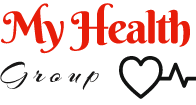The role of a nurse was limited to bedside care many years ago as nursing was considered a female-oriented profession. However, with rapid developments in scientific technology, the uproar over gender equality, and an increased burden of patients across the globe, the dynamics of nursing have changed drastically. The most significant realization of this century related to nursing is that the job of a nurse cannot be limited to bedside care if we really want to improve the quality of healthcare.
In fact, nurses have the strongest ability to bring about a significant change in the quality of healthcare provided to patients because they are in direct contact with patients at all times. As a result, it is important to focus on tuning and expanding the role of nurses beyond bedside care.
A nurse who has enlarged their scope of practice and frequently has more autonomy in their practice is said to be in an expanded nursing position. This article will discuss the many ways in which nurses today can help to improve the quality of healthcare and patient outcomes in their practice.
What is health equity and health quality?
Health equality can be achieved if everyone has an equal and reasonable opportunity to be as healthy as they can be. Nurses are in a good position to assist in the development of individualized and community-focused solutions and encourage and collaborate with multidisciplinary and interdisciplinary groups and coworkers to implement those solutions. They also have an important part to play in addressing the fundamental root causes of poor health by recognizing and understanding an extensive array of factors that influence how well and how long people live.
By assuming new responsibilities, working in unfamiliar environments, and significantly ramping up their efforts to engage with populations and other sectors over the next ten years, nurses have the capacity to transform the face of health equity.
But for the United States to make meaningful strides towards achieving health parity, it will need to manage resources, concentrate on problems that have an influence on people’s health, and intensify efforts to build the nursing workforce. Nursing schools’ curricula, programmes, and perspectives must also alter in order to meet nurses’ new and enlarged roles.
How can nurses improve access to quality healthcare?
Nurses should improve access to healthcare by taking a holistic approach
The complete patient, not just the current injury or condition, is treated by nursing experts. They look beyond the signs and symptoms to find the underlying cause of the problem to make sure that a patient receives the proper care and the resources they need to manage their care outside of the hospital.
Nurse education is changing along with the transition in patient care from acute care to preventative strategies. As a result, it has become crucial for nurses to be well-educated and informed of the most recent advancements in their relevant fields if they want to improve patients’ access to quality care and achieve improved patient outcomes.
Although nurses need at least a master’s degree to prove that they have sufficient theoretical and practical skills, it is very important that they keep building on pre-learned skills over time. In such a scenario, the nurse practitioner certificate programs offered by Wilkes University are a great option for graduate nurses to continue improving their knowledge. They offer APRN post-graduate certificates after students complete a comprehensive online training course.
Nurses should provide an open channel for communication with the patient
Cultural sensitivity is crucial, especially when patient satisfaction is the main concern. The ability to put patients at ease and provide a safe space for free discussion is a skill required of nurses. It takes listening and speaking abilities to establish trust and establish a connection with patients.
Strong interpersonal abilities aid in putting your patients at ease. In order to effectively ascertain your patients’ requirements as a nurse, you should have open communication with them. To ensure that everyone, including the patient, knows the plan of care and has access to the information they need to make the best decisions, effective communication is crucial.
Nurses should provide emotional support to their patients
More than merely assisting patients with their physical well-being is involved in nursing. Patients dealing with severe diseases or injuries may feel apprehensive and concerned about how their medical condition may impact their quality of life. Nurses may help patients have a more pleasant healthcare experience by listening and offering comfort. In order to truly comprehend the difficulties and challenges faced by their patients, nurses must practice active listening and make a deliberate effort. When a patient is unable to speak for themselves, they must act as their advocate, anticipate their needs, and speak on their behalf.
Patients’ families must be educated by nurses
Teaching patients and their families how to take care of themselves or a loved one is another critical part of nursing. In addition to assisting patients one-on-one with managing their health and enhancing overall well-being, nurses can also serve as the coordinators of community programmes that encourage healthy lifestyles. The majority of healthcare is provided outside of hospital walls; thus, enhancing community access to health services and promoting public health education will secure a better future for everybody.
Nurses should empower their patients
By encouraging their coworkers and peers to pursue higher education, nurses may assist their organization in providing care that is of a better grade. By developing an orientation programme for new nurses or frequent training sessions to ensure experienced nurses are up to speed on optimal patient care practices and procedures, a nurse manager, for instance, sets people up for success.
How do nurses improve patient outcomes?
Nurses contribute to lowering medical errors and enhancing patient safety
The World Health Organisation (WHO) lists adverse health outcomes brought on by poor medical care as one of the top 10 global causes of death. The safety of patients may be threatened by issues including infections, incorrect diagnosis of ailments, and drug mistakes. The following nursing practices greatly decrease the error rate:
- Observing customary safety measures
- Coordinating the activity of specialists in the medical field and chemistry
- Enhancing the interoperability of health records while correctly and quickly identifying health concerns
Nurses offer telemedicine and telehealth technologies
Patients now find it easier to reach healthcare professionals and medical records as a result of telehealth solutions and technological developments. People have an easier time understanding the healthcare system and obtaining the treatment they require when they have access to computers or handheld gadgets to access information, communicate with their healthcare team, or acquire facts and information. Nurses make utilizing this technology simpler by instructing patients and giving them guidance on how to use these technologies efficiently.
Nurses assist in chronic disease management
The major causes of death and disability in the United States, according to the Centres for Disease Control and Prevention, are cancer and heart disease. In reality, 40 percent of people have a variety of chronic conditions that require constant management. Since it is impossible to manage so many patients at the hospital every day, nurses help patients manage their chronic conditions themselves by providing easy access to information, positive feedback, and regular follow-ups.
Nurses ensure continuity of care and discharge procedures
To maintain high-quality care, nurses plan and coordinate a patient’s treatment with their other doctors. In order to help all caretakers maintain consistency when hospital patients are discharged, nurses play a crucial role in generating succinct reports.
Nurses talk to patients and inform them about their health
Nurses help patients understand their medical diagnosis and available treatments. The following are some examples of communication techniques provided by the Agency for Healthcare Research and Quality (AHRQ) that nurses could use:
- Take time to understand the patient. Asking patients to explain themselves again is a good idea.
- Kindly transfer the patient. Talk over the details of the diagnosis and therapies with the patient.
- Review the drugs. Describe in full the patient’s current medication schedule.
Nurses create chances for the growth and support of the staff
In order to encourage positive patient outcomes, nurses provide medical workers the opportunity to enhance their careers. Possibilities include getting the tools they need to work efficiently as well as knowing about the most recent trends.
Nurses examine data to find out points of improvement
Analyzing data enables nurses to pinpoint possible growth opportunities for a hospital or other healthcare facility. Through analyses of patient group data and operational procedures, nurses set a baseline for patient outcomes. Two examples of techniques for measuring outcomes and costs are patient satisfaction surveys and electronic health records (EHRs). Overall, the nurses’ method helps them correct any errors or shortfalls and produces improved patient outcomes.
Nurses provide culturally appropriate care
Nurses integrate their knowledge, passion, and sensitivity to their patients’ cultural values with their experience and understanding to offer treatment that is culturally competent. Throughout a nurse’s nursing career, cultural competency will evolve, and this takes perseverance, practise, and determination. The level of care may be enhanced by culturally competent nurses, which will lead to improved health outcomes for patients from a range of cultural backgrounds. When nurses comprehend and uphold the beliefs and cultural norms of their patients, supportive and trusting relationships between them and the nurses are more likely to develop. This supports positive patient outcomes everywhere and the finest methods of sickness and injury prevention.
Nurses utilize risk management and quality assurance techniques to maintain a safe environment
In order to establish a safe workplace for patients and staff, nurses must practice infection control. They participate in quality assurance and continuing activities to enhance quality. Additionally, nurses evaluate their own performance and, when necessary, make adjustments to their methods. They assign, oversee, and monitor the job done by the EN and other auxiliary care personnel. Finally, they identify their knowledge and skill deficiencies and ask for assistance. Each of these areas may be focused on in order for nurses to improve patient outcomes.
Nurses show responsibility for their professional growth and standing as registered nurses
By adhering to the Code for Nurses and Midwives, nurses uphold and advance their profession. They apply technical skills and knowledge based on evidence-based or best practices while reflecting on current nursing practices.
Nurses also take part in and contribute to programmes and committees that focus on research- and evidence-based practice. They also aid in the professional and academic advancement of others.
They actively engage in ongoing professional growth programmes to maintain proficiency in the area(s) of practice and take actions to address any skill or knowledge gaps. The more knowledge they gain, the better they become in their practice. As a result, they are able to provide a higher quality of care to their patients and achieve improved patient outcomes.













